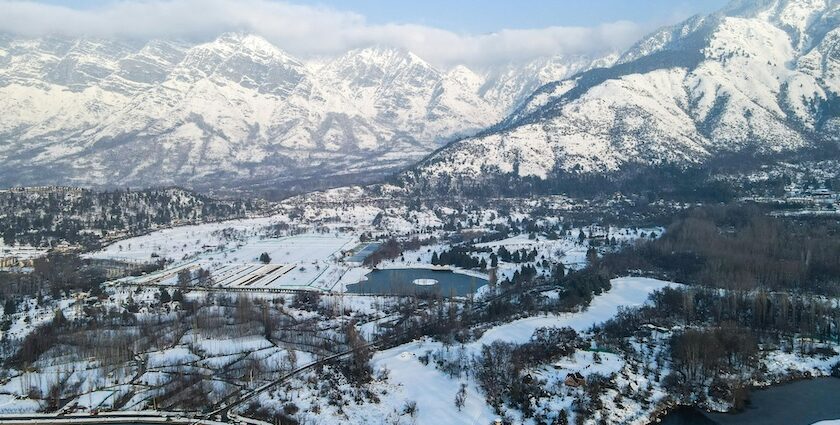Experiencing the snowfall in Srinagar is similar to walking into a fairy tale. The entire valley gets blanketed in snow, and it creates surprisingly quiet beauty. This guide provides you with all the simple information you need to plan your visit and experience the magical snowfall safely and comfortably. From what to do and where to eat, get ready for a fabulous winter vacation in this beautiful snow paradise. For travellers looking for a winter holiday trip to remember, seeing a snowy day in Srinagar is a fantastic opportunity.
Quick Details About Snowfall In Srinagar
Elevation: 1,585 metres (5,200 ft) above sea level
Typical First Snow In Srinagar: Mid to late December
Peak Snow Months: January and February
Winter Temperature: – 6°C to 10°C
Major Water Body: Dal Lake, Jhelum River
Famous For: Houseboats, Mughal Gardens, and Kashmiri handicrafts
Location
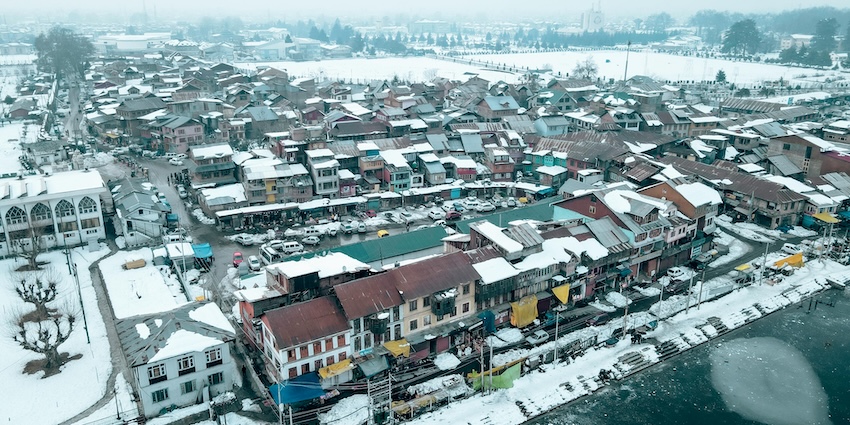
Srinagar serves as the summer capital of Jammu and Kashmir and is located centrally within the Kashmir Valley. The city is also located on the banks of the Jhelum River, and is the principal city in the Srinagar District. The city is flanked to the east by the Zabarwan Mountains. A well-known landmark in the central city is Lal Chowk, and the historic old city stretches across locations like Nowhatta and Zaina Kadal. The Shere-e-Kashmir Institute of Medical Sciences (SKIMS) in Soura is an important landmark hospital and is also close to the downtown area.
Suggested Read: How To Reach
Photo: Saqlain Ashraf Clicks / Pexels By Air: The simplest way to get to Srinagar is through Sheikh ul-Alam International Airport (SXR), located approximately 15 km from the city centre. The airport receives a lot of flights from regional cities of Delhi, Mumbai, and others, on a regular basis. Taxis and pre-paid cabs are available outside the terminal to get you to your accommodation directly. By Rail: The closest major railway station for all-weather access is Jammu Tawi Railway Station (JAT), which is around 260-300 km from Srinagar. After that, you’ll need to travel the distance by road. However, the Kashmir Railway project has established a train connection from Srinagar to Banihal railway station (BAHL), and that journey is done by way of the Qazigund-Banihal tunnel. From Banihal, a shared taxi or cab can be taken into Srinagar. By Road: Srinagar is connected to other states by the Srinagar-Jammu National Highway (NH 44). Although it is the main road connection, it can often be suspended for hours or days due to landslides or heavy snowfall in Srinagar and in the hills, such as the Jawahar Tunnel region. There are typically bus services and taxi services available if route conditions allow, and the travel from Jammu can take around 7-10 hours. Following are some of the must-do things to do in Srinagar during snowfall and experience the beauty of Kashmir. Photo: ImagesofIndia / Shutterstock Take a historic heritage walk through the old city of Srinagar to see its nine historic wooden bridges over the Jhelum River, called Vyath in the local language. These bridges link the two banks of the city, bridges like Zaina Kadal, Fateh Kadal, and Habba Kadal and during the snowfall in Srinagar, offer stunning monochromatic architectural views. The walk is more about engaging with the everyday lives of local Kashmiris that go on despite the snow. You can see local fishermen piecing together their livelihood, admire the wooden architecture of the traditional homes (Khatamband ceilings), and take in the soft flow of the river. Suggested Read: 2. Take A Boat Ride On Dal Lake, Walk The Ice-Edge, And Photograph
Photo: Suhail Skindar Sofi / Wikimedia Commons When it snows in Srinagar, Dal Lake turns into a dream for photographers. Begin with a short Shikara ride through the open channels and your boatman will cover you with warm blankets. Then, you can walk on the frozen edges of the lake where the ice touches the shore and safely appreciate the icy shoreline contrast against the snow-covered land. This walk will give you the perfect opportunity for ice-edge photography of the stunning reflections of snow-covered mountains on floating ice. Photo: Vika Glitter / Pexels / Image For Representation Only To really experience a local snowday in Srinagar, simply walk into residential neighbourhoods like Rainawari, Bemina, Nadihal, or Gogji Bagh after a fresh snowday. This is where community life happens. You can watch the local kids build snowmen and take part in spontaneous snowball fights. You can watch the snow play amidst quiet and joy or you can also go to nearby snow parlours. Locals often clear pathways and even invite you to take part in the fun. Bring your gloves, and get ready for friendly interaction in Srinagar. Suggested Read: Places To Visit In Srinagar During Snowfall
Here are five beautiful places to visit in the Srinagar district that you can enjoy while it’s covered in snowfall. Photo: Deepank Ranka / Wikimedia Commons Pari Mahal is a historic Mughal garden building with seven terraces situated high on the Zabarwan range. The terraced ruins, which were once an astronomy school founded by Dara Shikoh (the son of Emperor Shah Jahan), now appear to be a forgotten castle amid the snow. The key draw in winter is the incredible panoramic view of the partially frozen Dal Lake and the entire city blanketed in snow from its high vantage point. The view and the mahal are perfect for photography. Location: 3VJG+FVC, near Pari Mahal Parking, Srinagar, Jammu and Kashmir Sitting elegantly on the north shore of Dal Lake, the Hazratbal Shrine is Kashmir’s most important Muslim shrine. Its gleaming white marble construction, containing a venerated holy relic, looks pristine and magnificent against the white backdrop and the grey water of the lake. The shrine boasts a historic, wide-open courtyard. Being there during winter enables you to feel local devotion deep in quietness. The shrine’s harmonious combination of Kashmiri and Mughal architecture is particularly lovely in the crisp, winter light. Location: Dargah Hazratbal Mosque, University Main Road, Hazaratbal, Srinagar, Jammu and Kashmir Suggested Read: 3. Hari Parbat Fort And Hill
Photo: Mohamad Talib Bhat / Wikimedia Commons Hari Parbat is a massive hill overlooking the Old City (Kooh-e-Maran). There are many religious sites on the hill, but the Hari Parbat Fort, built by an Afghan Governor, is a stunning Mughal fort. With its massive walls and ramparts, which are often highlighted by the snow in winter, the fort provides an indescribable view of snowfall across the entire old city, plus Nigeen Lake right next to it. The hike (or drive to the base) is absolutely worth it for this historic landmark and fantastic winter vistas. Location: Nohata, Srinagar, Jammu and Kashmir Photo: Farhaan Mushtaq Parimoo / Pexels Nigeen Lake is Dal Lake’s quieter, smaller arm, frequently chosen by people looking for silence. Nigeen Lake is known for its more peaceful, immobile houseboats than the lively activities on Dal Lake. The important winter detail here is the vast concentration of Poplar and Willow trees surrounding the water. When Poplar and Willow are carded under a heavy frost or fresh snow, the entire perimeter is an archway of white lace, tastefully reflecting in the lake’s extremely still and clear water. Location: To the west of the larger and more well-known Dal Lake, Srinagar, Kashmir Suggested Read: 5. Nishat Bagh (Garden Of Bliss)
Photo: McKay Savage / Wikimedia Commons Nishat Bagh is a huge Mughal Garden located directly on the eastern bank of Dal Lake. In the winter, you will see no flowers, but you can come for the spectacular view of the architecture. It is known for its 12 shallow, steep, tiered terraces fully dressed for winter with a thick snowfall. The dry or frozen central stone aguia, covered in snow, leads your eye straight from the lake to the snow-covered peaks of the Zabarwan Mountains in the distance. The large bare Chinar trees, weighted with snow, only add to the architecture. Location: Boulevard Rd, Nishat, Srinagar, Jammu and Kashmir If you really want to splurge with a high level of comfort and convenience, base yourself at The LaLit Grand Palace Srinagar or Vivanta Dal View by Taj. Both hotels provide central heat and warm cosiness while enjoying soothed, snow-covered views of Dal Lake. Such luxury stays start around ₹10,000 to ₹18,000 per night. If you want an authentic and mid-range comfort, book a Houseboat on either Dal or Nigeen Lake. Always remember to confirm that they have central heating or a Bukhari, as rates are typically lower, ₹3000 to ₹7000 per night. For budget-conscious travellers, look for guesthouses and smaller hotels in the central Dalgate or Raj Bagh areas, ranging between ₹1,000 and ₹2,500 per night. Suggested Read: Shopping In Srinagar Photo: Spice Eats / Wikimedia Commons For the well-known multi-course feast called Wazwan, you can try the legendary Ahdoos Restaurant or Mughal Darbar on Residency Road. If you fancy the classics like Rogan Josh and Gushtaba, a full meal for two will cost you anywhere from ₹800 to ₹1,500. If you are looking for a quick, hot local snack, Khayam Chowk is a great choice in the evening for Seekh Tujj (grilled meat skewers). You can spend around ₹100 to ₹250 for two. If you want a good, trusted vegetarian option, Krishna Vaishno Dhaba is an affordable and solid place near Dalgate. Photo: Syed Qaarif Andrabi / Pexels The most reliable and frequent snowfall in Srinagar occurs during the heart of winter, between late December and the middle of February. December marks the start of heavy snowfall, particularly in the surrounding mountains, while Srinagar typically sees the first decent blanket of snow late in December. January is often the coldest month and the peak for heavy snowfall in Srinagar, typically resulting in the partial or completely frozen Dal Lake. In February, temperatures begin to rise slowly towards the end of the month as the valley begins to make the transition to spring. Suggested Read: Tips For Travellers
Snowfall in Srinagar provides a picturesque, peaceful, and truly unforgettable winter vacation. It is world-famous for the scenic beauty of its non-busy and ordinary tourist destinations. The combination of experiencing local culture, staying in a comfortable houseboat, and looking at the scenic snowy Himalayas provides something distinct from anywhere else. Plan your trip and see the spectacular snowfall in Srinagar today through TripXL. Cover Photo: Imad Clicks / Pexels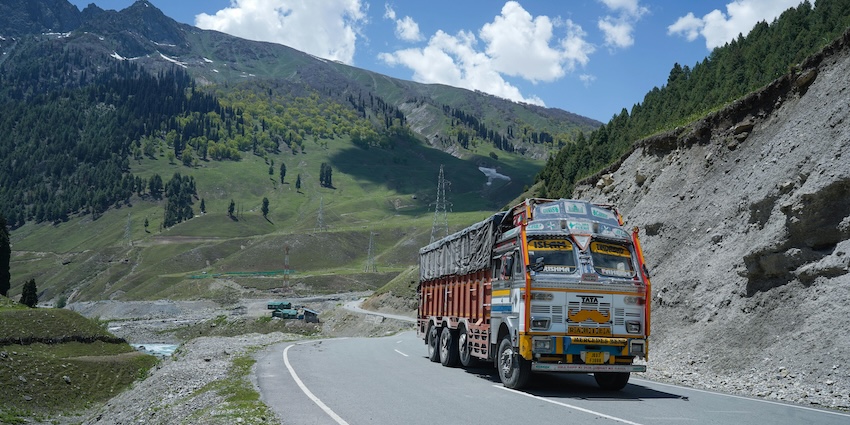
Things To Do During Snowfall In Srinagar
1. Go On A Heritage Walk Of The Old City’s Bridges
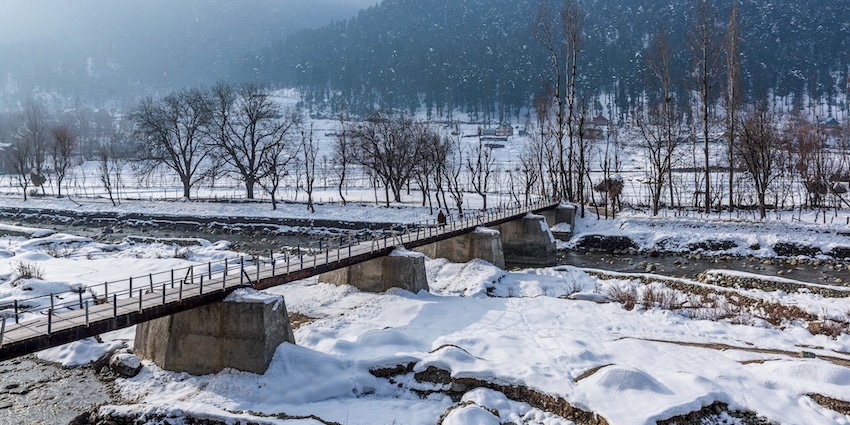
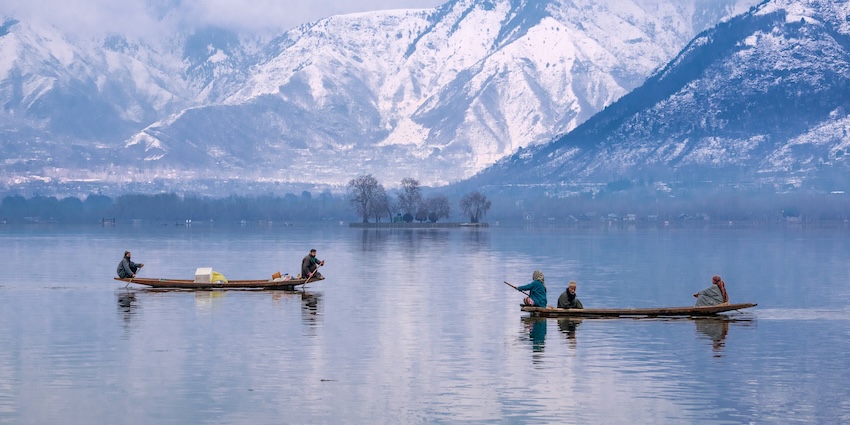
3. Join A Local Snowball Play In Residential Areas
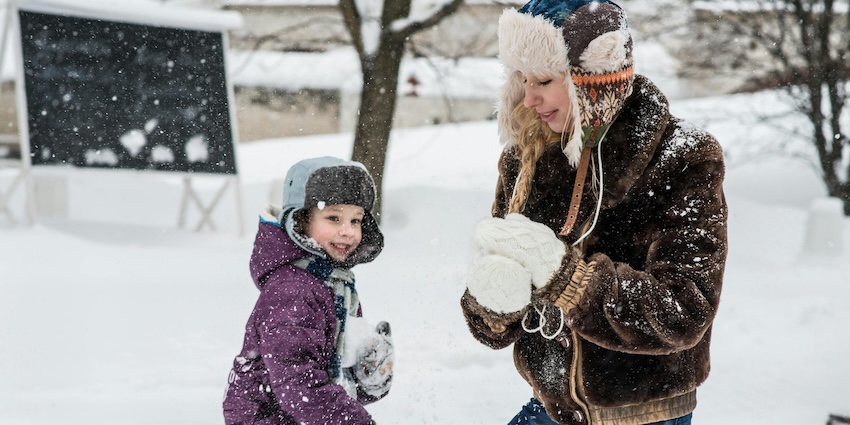
1. Pari Mahal (Palace Of Fairies)
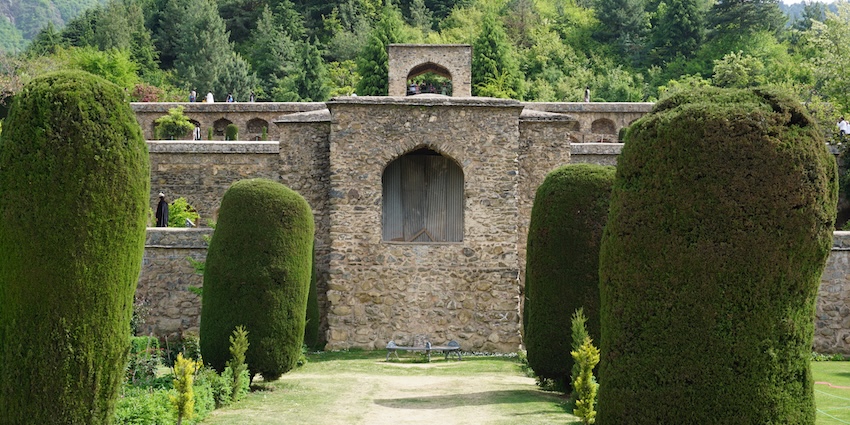
Timings: 9:30 AM – 5:30 PM (often closed on Friday)
Entry Fee: ₹20 for Indian citizens2. Hazratbal Shrine
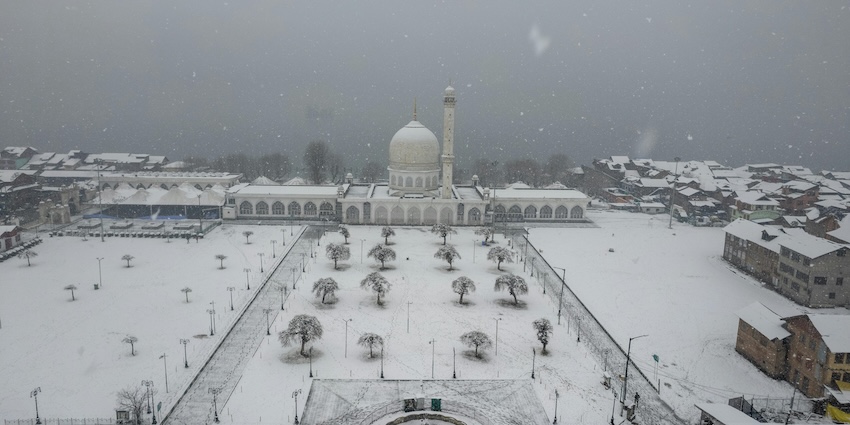
Timings: 9:30 AM – 5:30 PM 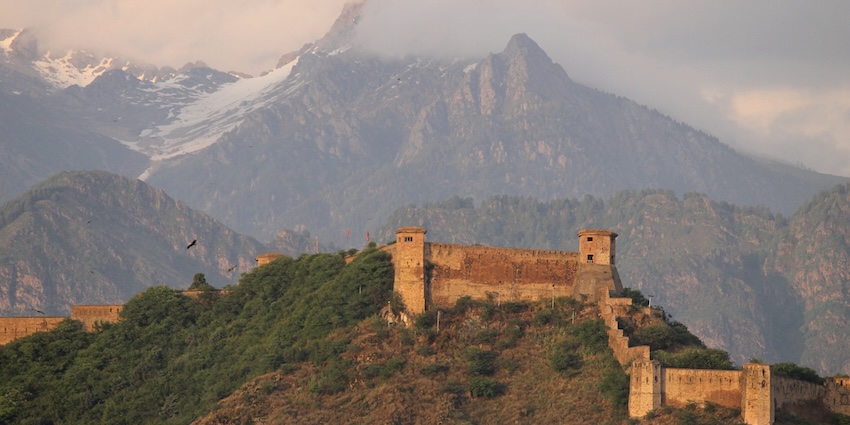
Timings: Fort access 9 AM – 5 PM
Entry Fee: ₹30/50 for Indian citizens4. Nigeen Lake
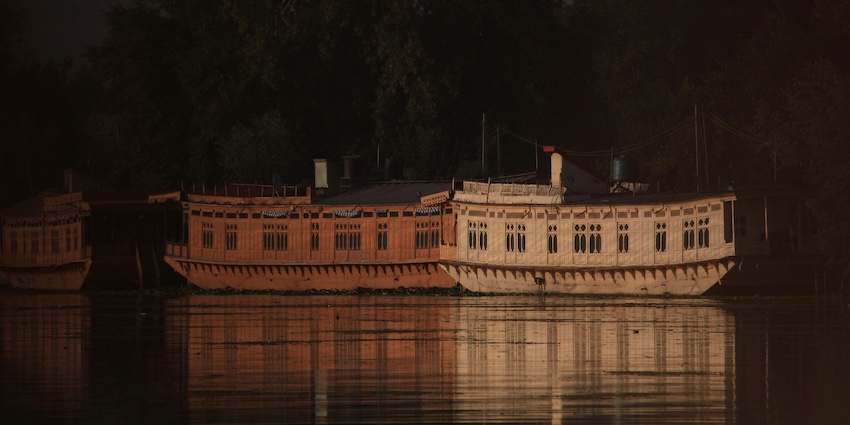
Timings: Open all day (daylight hours recommended)
Entry Fee: Free (Shikara rides cost extra, approx. ₹800/hour)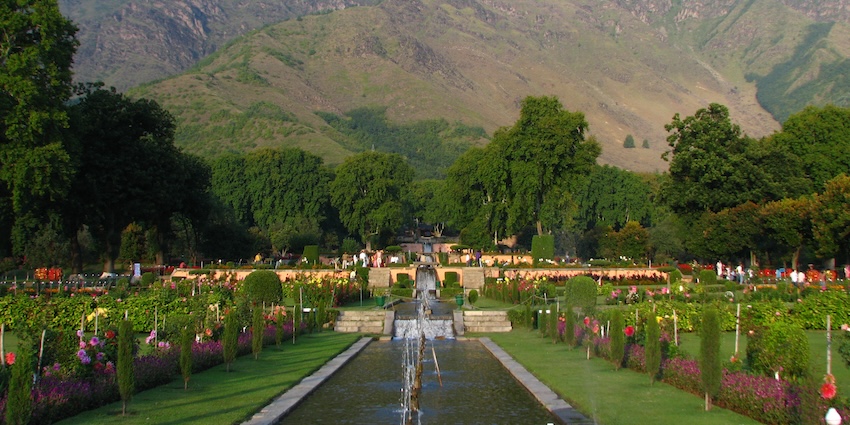
Timings: 9 AM – 5 PM
Entry Fee: ₹30 per personWhere To Stay
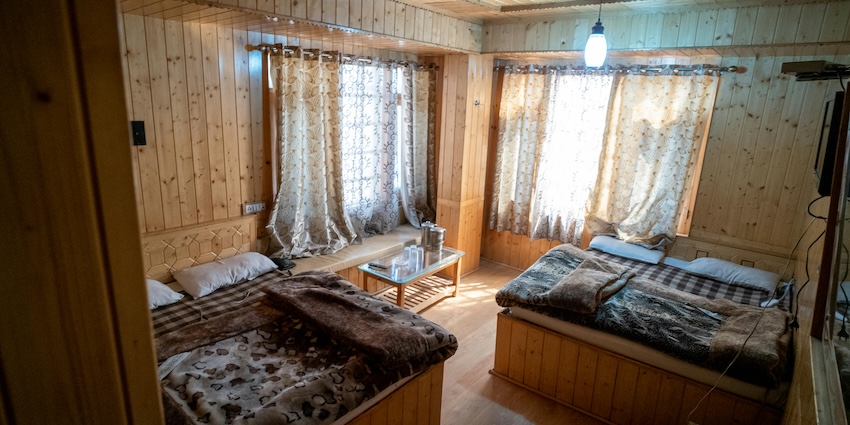
Where To Eat
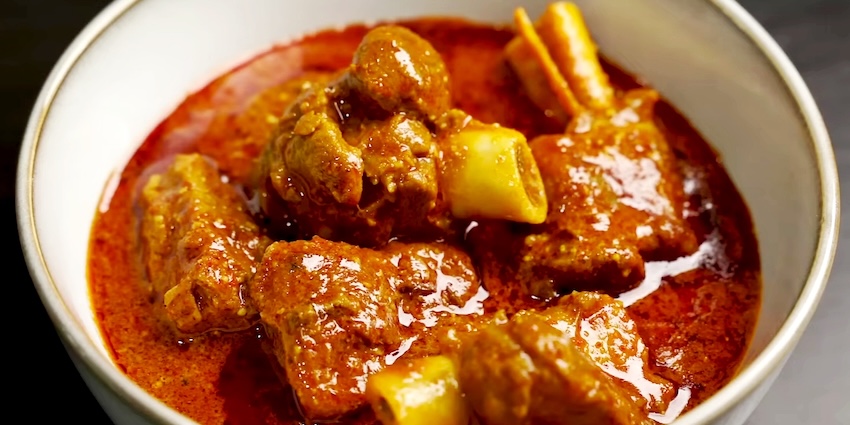
Best Time To Visit
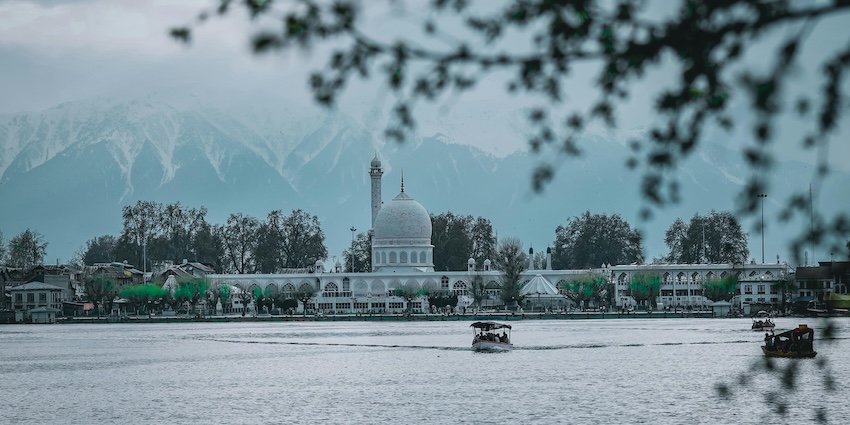
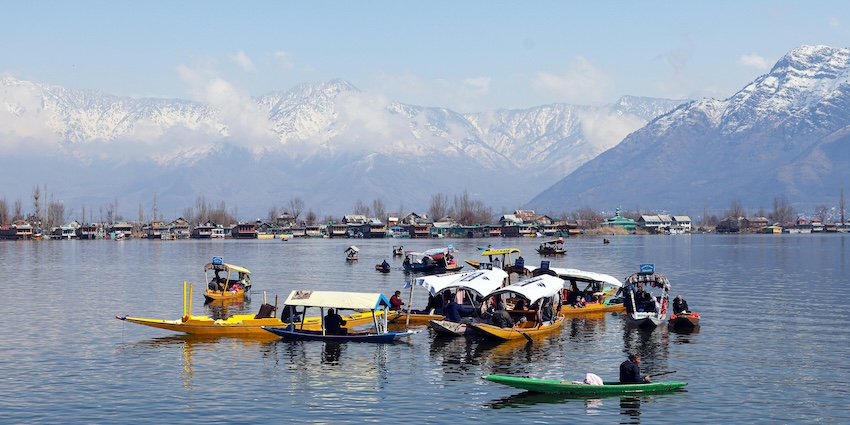
Frequently Asked Questions


 WhatsApp
WhatsApp
 Twitter
Twitter
